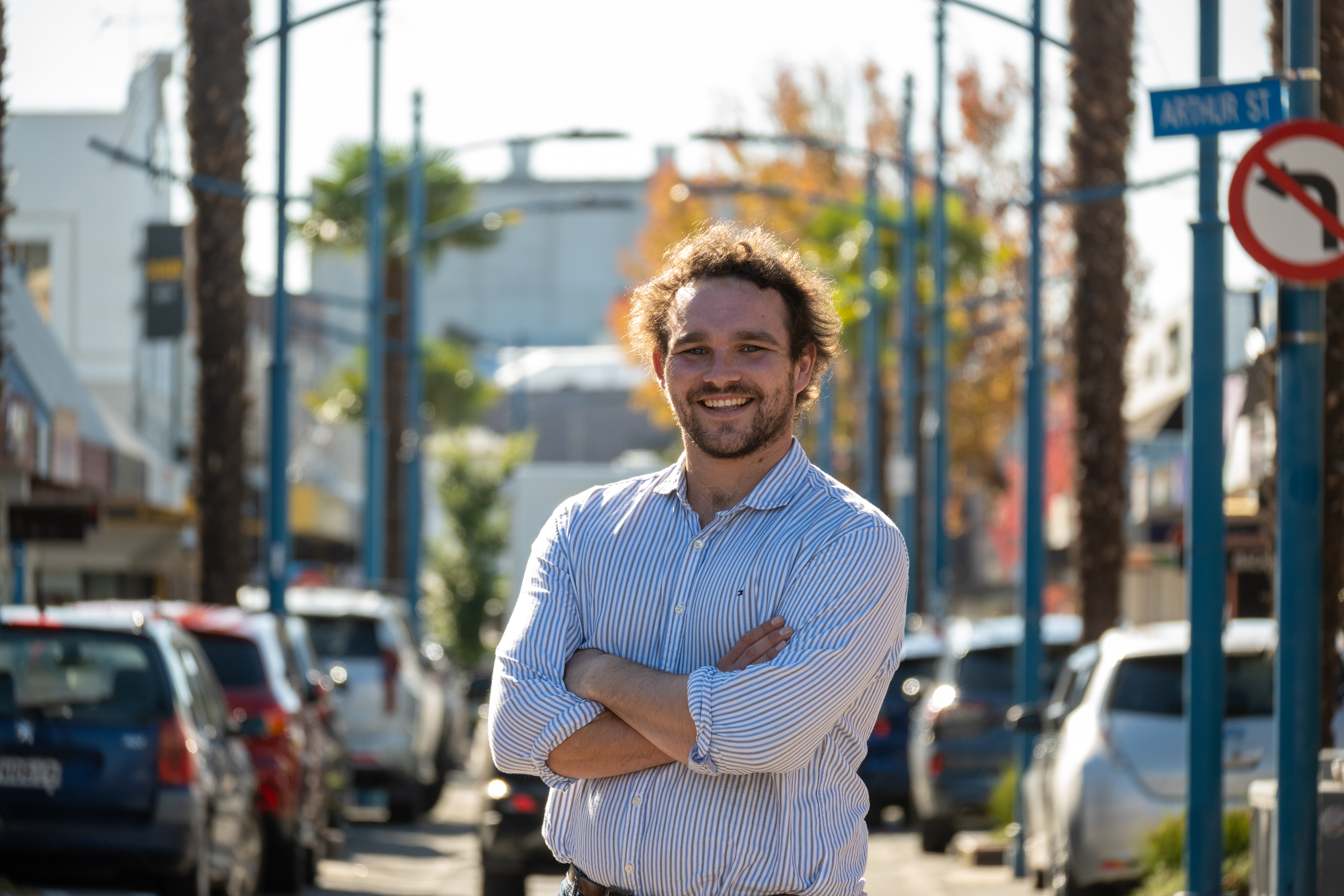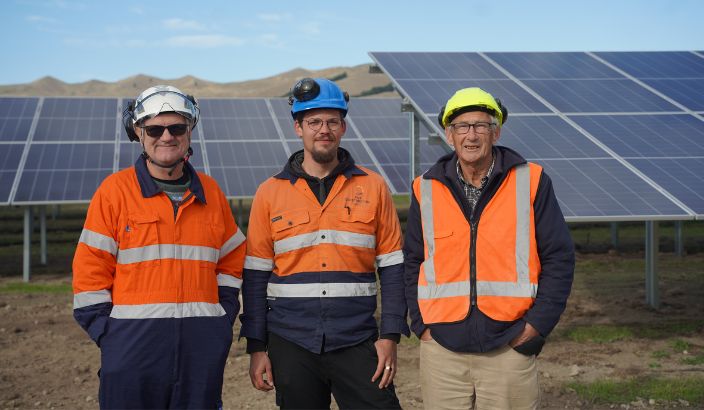Capturing the top of the South’s sunshine


Wayne Stronach, Gabriel Doerstel and Rick Osborne with one of the newly-installed solar installations near Riverlands, south of Blenheim. Photo: William Woodworth.
A formerly unproductive vineyard just south of Blenheim will power 16% of Blenheim's daytime needs when it is plugged in to the grid.
The Rānui Solar Farm, currently under construction, has six hectares of solar panel surface set to generate up to 12.6mWh - more power than both the Branch and Waihopai dams combined output. The former vineyard was purchased with the repurpose in mind by Rick Osborne, while the custom solar panel design was put together by Wayne Stronach and built by specialised solar contractors K&T Construction.
Rick says the project has been in process since he purchased the property three and a half years ago. “We bit the bullet to get the vines out and get ahead on the solar game once consent was granted, which it was last September,” says Rick.
“This vineyard was not productive with mostly aging vines and prone to flooding, so with raised solar generation and grazing livestock we’re finding a more productive purpose.
“Marlborough is just gold when it comes to solar potential, obviously shown with our sunshine hours every year, and Lady Luck has been with us for this construction so far with the weather.”
Wayne Stronach’s 30 years of power supply experience meant he quickly saw the site’s solar potential when given the design tasks.
Wayne says while solar may be expensive up front, it produces the lowest cost per kilowatt hour - made even cheaper and easier due to onsite power connections.
“This site has 33kV powerlines running across the site which means there’s less costs involved in building transmission lines to mains so we can just have three power inverters on site and plug straight in to the grid,” he says. “We wanted the panels to fit into the environment for sure, and I think it adds some character and impact on our claim to the sunshine capital title having the farm just out of town too.”
Wayne’s design saw 20,608 TrinaSolar power-generating panels set in place on 10,762 piles buried 2.5 metres deep, sturdy enough to withstand earthquakes, low enough to not be intrusive for views and minimising any possible mechanical issues.
Learn more at www.ranuisolar.co.nz
